Farming is one of the oldest and most lucrative endeavors you can venture on your own. You can start with minimal investment and pick the easiest crop to start with. Once you know how to manage your own farm, you can slowly scale it and turn it into a profitable business.
But what sort of crops should you plant? Can several types of crops coexist on the same land?
There are many types of farm crops that can grow and that will flourish together in the same location. In this article, we have compiled and classified each crop based on its category and functionality. Let’s take a look at each of them:
Table of Contents
1. Food Crops
Grains
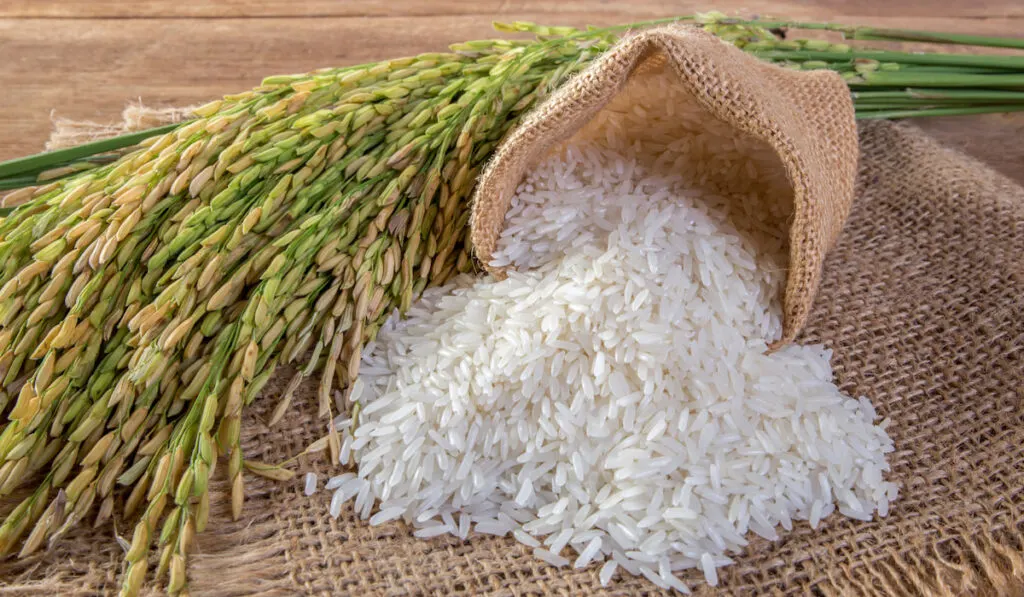
Grains are food staples that you can find in our daily diet.
Most grains contain vitamins A, B, and E, fiber, phosphorus, iron, magnesium, and selenium. In fact, they are the most popular type of food in many countries.
There are a few categories of grains such as whole, refined, fortified, and enriched grains.
According to nutrition experts, consuming grains on a daily basis can greatly improve our health. For example, they help in lowering our blood glucose level, promoting good bowel movements, reducing cholesterol levels and blood pressure, and acting as a primary source of energy or carbohydrates for our bodies.
There are many types of grains that you can grow. These include white rice, brown rice, black rice, wild rice, rye, barley, sorghum, millet, farro, cracked wheat, oatmeal, and quinoa, among others.
Fruits
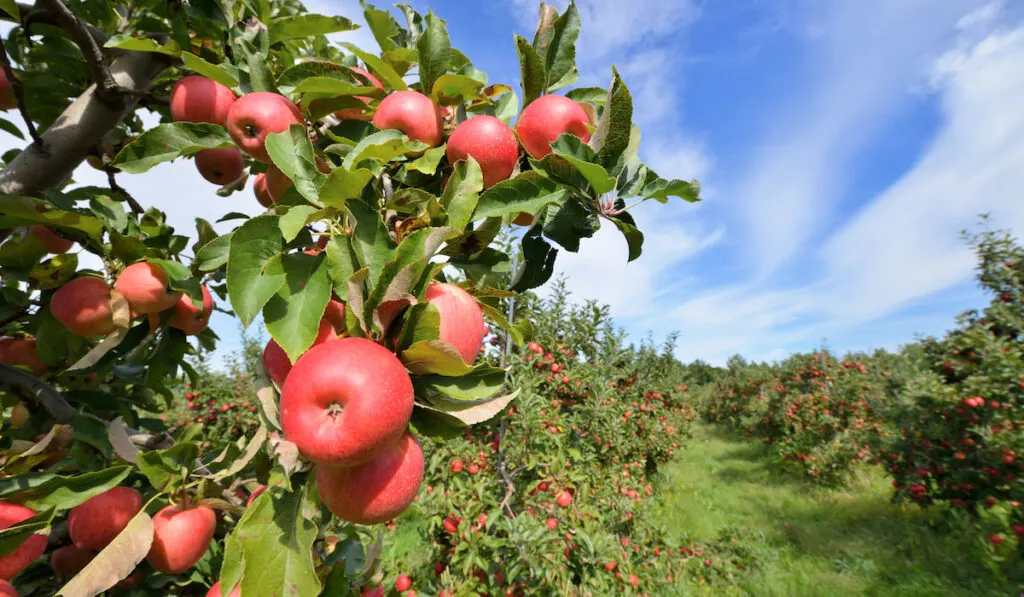
Ask around and you will hear that most people love to have a small garden of fruits of their own.
Apart from the profit you can make from growing fruits, there is no doubt that fruits are highly nutritious and delicious foods that you can grow with ease.
From small fruits such as apples, pears, strawberries, and grapes, to large species such as coconuts, watermelons, papaya, and jackfruits, there are numerous varieties of fruits that you can grow.
However, you should know that not all fruits can thrive in the same climate. Some varieties thrive in colder climates while others are tropical species that love warm environments and hot sun.
So, be sure to pick fruits that can grow in your local environment.
Vegetables

Vegetables are great sources of vitamins, minerals, and fiber.
You can sow the seeds directly in the ground or grow them in greenhouses. But if you’re new to gardening, it is best for you to start with growing vegetables in the ground.
There are a few categories of vegetables that you can choose from. You can choose to plant leafy vegetables, tubers, bulb vegetables, root vegetables (which are discussed further under Root Crops), stem vegetables, flower vegetables, spices, and herbs. Unlike fruits, vegetables mature more quickly and are much easier to maintain.
Still, you need to watch for parasites and pest attacks, especially for vegetables with soft stems and large leaves.
2. Feed Crops
Oats
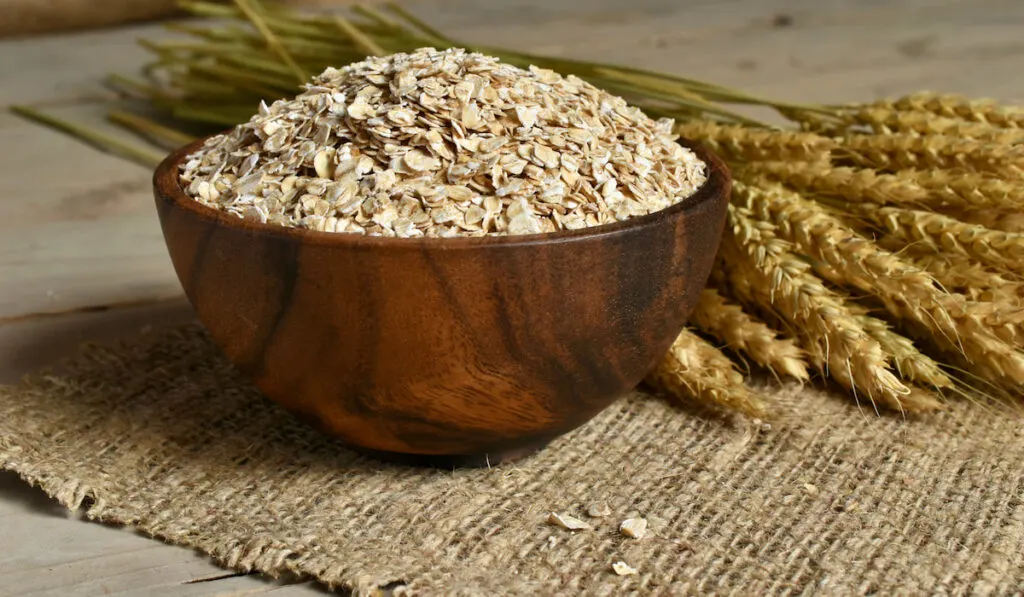
Oats are an edible source of food for humans and animals.
Oats contain many nutrients that nourish animals and livestock such as fiber, zinc, magnesium, phosphorus, and thiamine.
Depending on how they are processed, you can grow several types of oats which you can use as sources of animal feed.
These include oat groats, Irish oats, rolled oats, and Scottish oats. But to grow oat plants on your own, you need a livable environment for these plants to grow. Oats thrive in cooler regions that have enough exposure to full sun. They also grow best outdoors and are ready for harvest from July until October.
Wheat
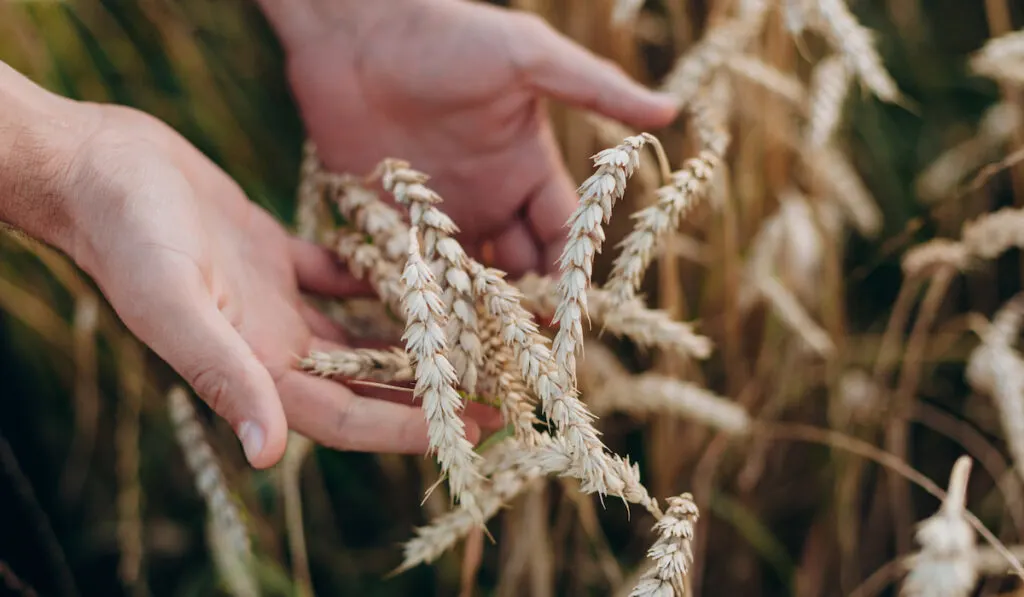
Wheat is one of the oldest and most widely cultivated cereal plants in the world. It is rich in nutrients such as protein, fiber, lipids, and other beneficial minerals.
In the United States, there are two types of wheat that are classified based on their growing period. They are known as spring wheat and summer wheat.
Wheat is a great source of feed for animals, especially livestock, such as cows, goats, and other ruminants, because it contains a high protein and fiber composition compared to other crops. Wheat also has a high gluten level that aids in better digestion and the formation of pellets inside birds’ stomachs.
Hence, if you raise chickens, ducks, and other farm birds, you can feed them with wheat.
Barley
Barley is one of the hardiest cereal grains that can thrive in extreme climates. Whether you live in a hot region or cold area, you can grow and use these grains as feed crops.
In fact, breeders and farmers are using barley to feed their livestock more than using it for human consumption.
Although barley plants are capable of adapting to their environment, it is still best for you to provide them with good growing conditions.
Barley grows well in hardiness zones 3 to 9. Most farmers plant barley in the spring or fall. So, you have options to choose from based on your preference.
Barley plants also prefer moist, well-drained soil and enough exposure to full sun. On average, they grow 2 to 3 feet tall.
3. Oil Crops
Peanut
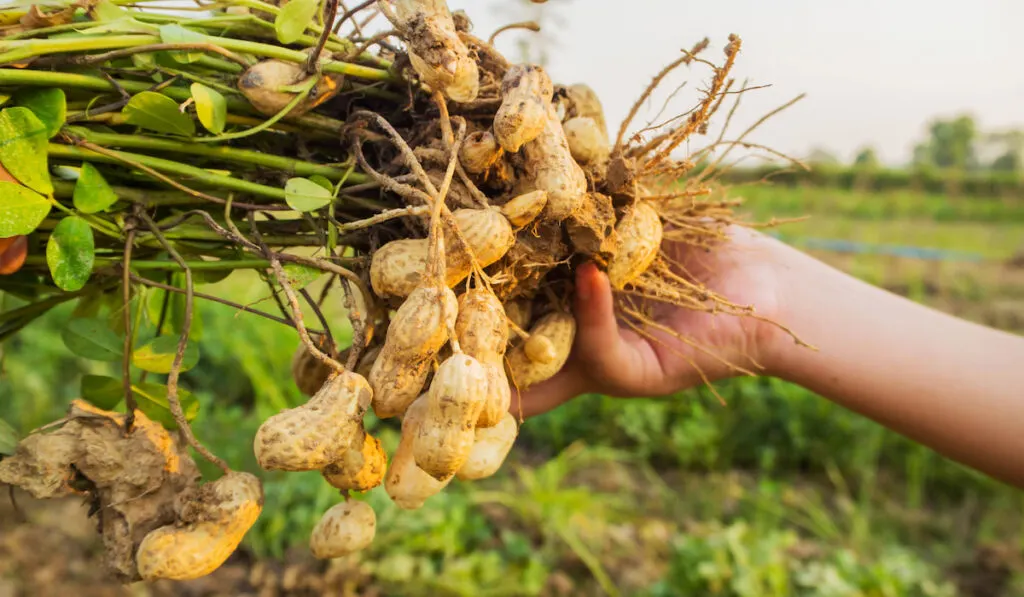
If you’re a fan of peanut butter and jelly, chances are, you know that peanuts are one of the world’s most popular crops. Peanuts or groundnuts are native to South America.
Did you know that peanuts and groundnuts are actually fruits that grow inside pods? These pods are produced underground.
Peanut plants grow well in slightly acidic, well-drained soil and under full sun. You can harvest the pods in early fall. After planting, you will have to wait at least 5 months before these plants start producing peanuts. On average, peanut plants grow 1 to 2 feet and spread up to 3 feet wide.
There are two types of peanut oil that you can get out of these leguminous vines. These are unrefined oil and highly refined peanut oil. Highly refined peanut oil is suitable for people with allergies to peanuts. There are no proteins in such refined oil that can cause allergic reactions.
On the other hand, unrefined peanut oil still contains peanut proteins that can induce reactions in anyone with peanut allergy. This type of oil doesn’t undergo any chemical processes aimed at completely removing the proteins.
Be sure to pick highly refined peanut oil if you have an allergy to peanuts.
Soybean
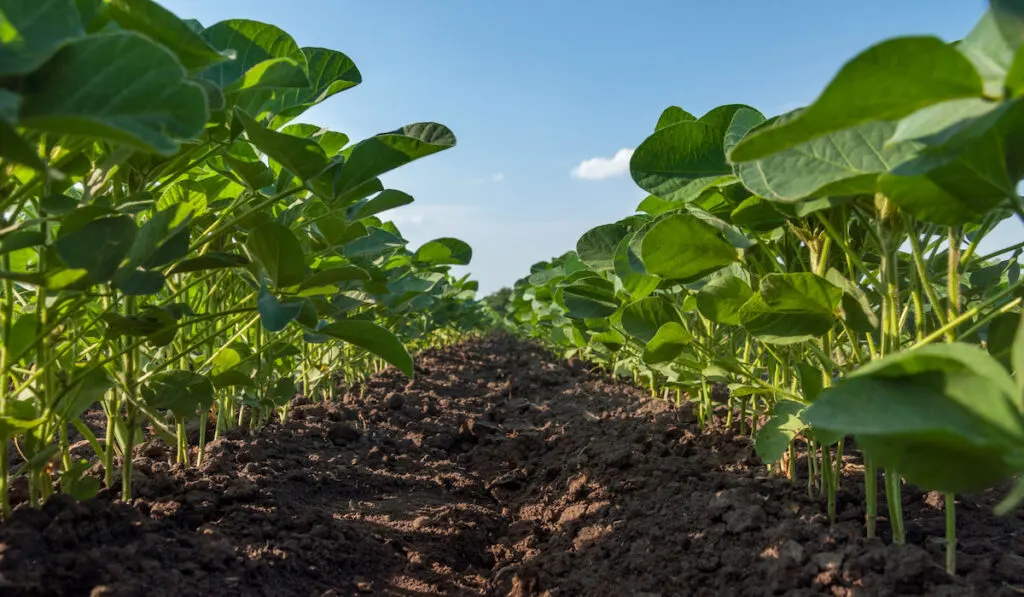
Soybeans are indigenous to Northeast China. These plants grow up to 1.4 feet tall with oval-shaped leaves and tiny flowers that come in white or purple. You can find soybean seeds inside their small pods that come in different colors such as green, yellow, brown, and black.
Soybeans are also known as soya beans and soja beans.
There are many products that you can get from soybeans. You can process soybean seeds and turn them into baking products, animal feed, and substitutes for vegan-friendly food. But most importantly, you can extract oil from these plants.
Soybean oil comes from both the pods and the seeds. It can be used to produce household products such as soaps, paints, cooking oils, cleaning agents, and other green industrial products such as biodiesel.
Sunflower Seed
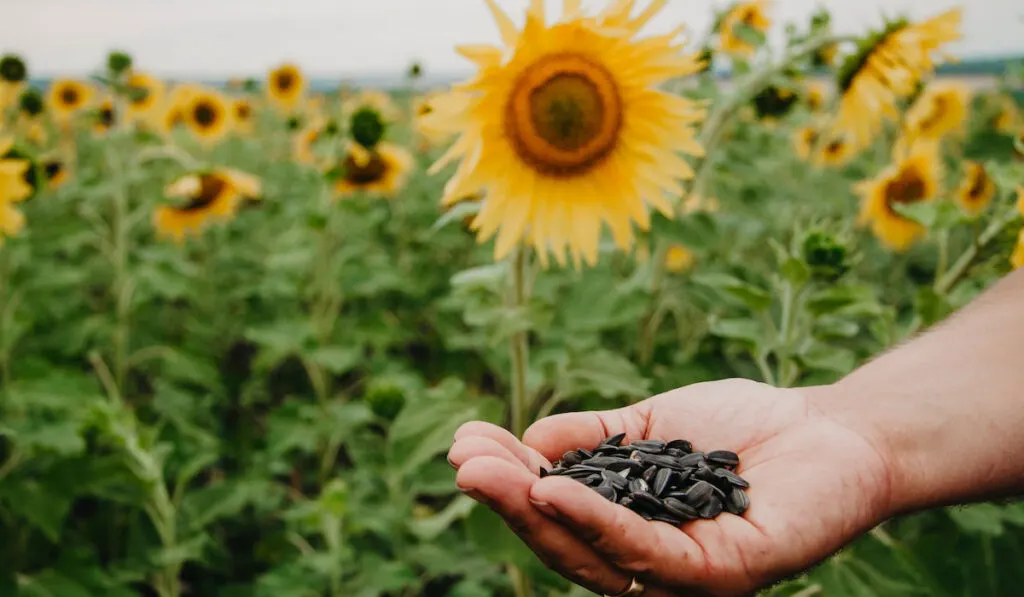
Sunflower seeds are categorized into three types, which are linoleic, high oleic, and sunflower oil seeds. They are extracted from sunflower heads that have dried and turned dark brown. You can also differentiate the seeds from the color of their husk.
Striped sunflower husk seeds are usually processed into snacks while black husk seeds are used in oil production.
Using sunflower oil in your cooking can greatly increase your cardiovascular health. Since it is rich in healthy fats, sunflower oil can reduce the cholesterol level in your blood. In addition, it also contains vitamin E which can reduce the risk of Alzheimer’s disease.
4. Root Crops
Carrots

Carrots are versatile root crops that you can use in any type of recipe.
Carrots are long, cone-shaped vegetables filled with lots of nutrients such as vitamins A, C, and K, calcium, fiber, magnesium, potassium, and folate.
Each variety also has different skin colors ranging from orange, white, yellow, purple, and red.
On average, carrots grow 2 to 20 inches long and spread up to 2 inches wide. They grow best in slightly acidic, well-drained soil and under full sun. Being root crops, they grow directly underground and require frequent watering to retain soil moisture. Extreme heat and hot seasons can also affect their growth.
You can harvest carrots 3 months after planting. You have the option of eating them raw, turning them into side dishes and cooking ingredients, or blending them well to make juices.
Sweet Potatoes
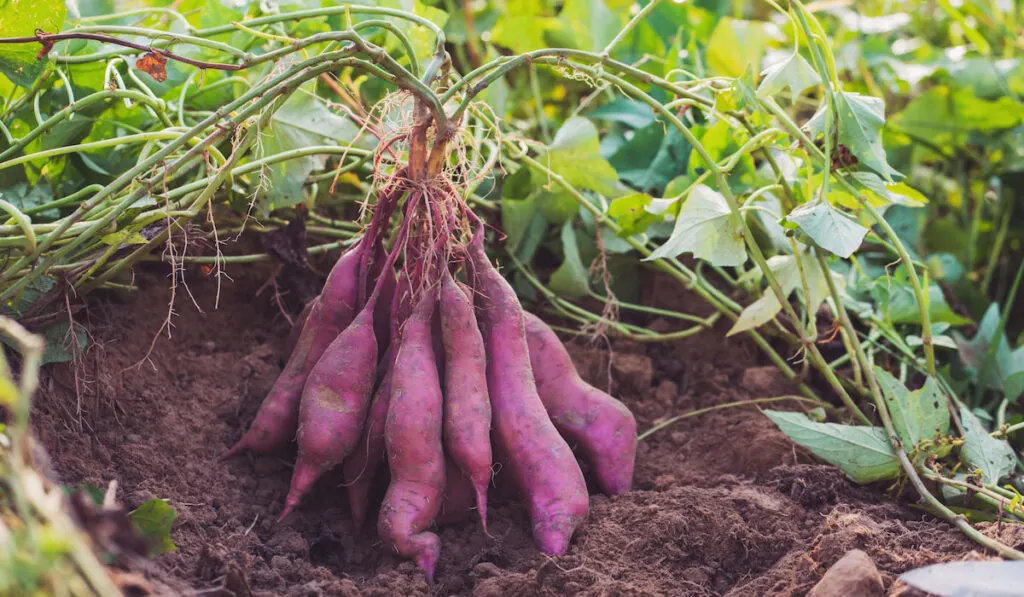
Sweet potatoes are native to North and South America. These tuberous plants thrive in hardiness zones 8 to 11 and adapt well to tropical climates. On average, sweet potato plants grow 2 to 20 feet long.
Depending on the variety, you may get sweet potatoes with different flesh colors such as orange, purple, white, and yellow. But if you’re looking for a fast-growing variety, pick the variety with orange flesh that matures in 3 months.
Growing sweet potatoes is fairly easy. These tropical plants grow well in slightly acidic, well-drained soil and under full sun. However, you need to provide enough space between each plant as they grow 12 inches to 3 feet wide. Other than that, they just need regular watering and additional nutrients from composts or fertilizers.
Beets
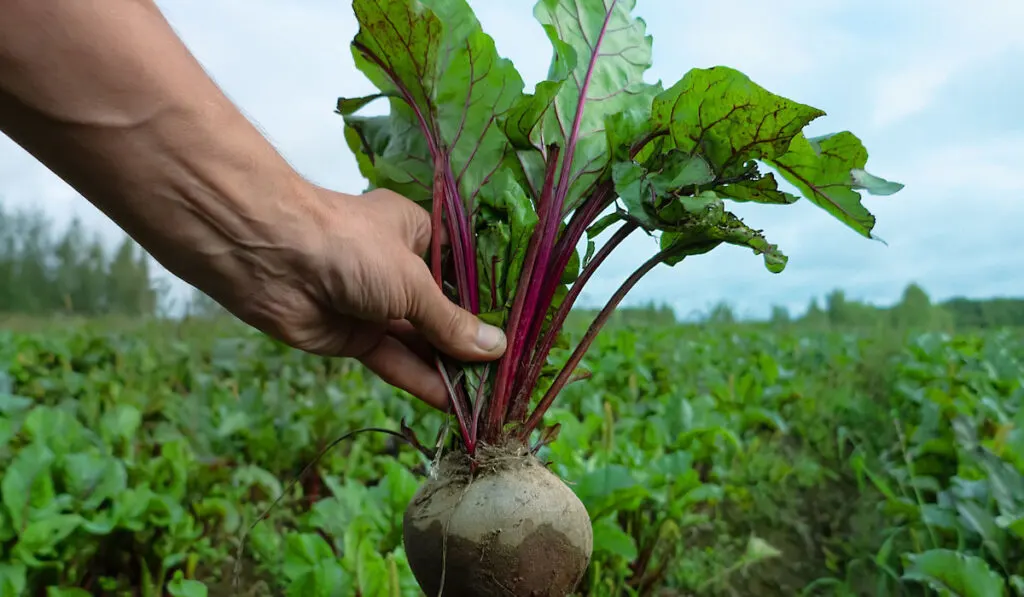
Beets or beetroots are indigenous to the Mediterranean. While these root crops grow well in cold regions, they still need enough exposure to full sun and slightly acidic soil with proper drainage.
Beets are bulbous plants with round shapes, dark red skin, and green leaves that grow above ground.
Other varieties may have different skin colors such as white, yellow, and a combination of red and white. Both beet leaves and roots are edible. You can eat them raw, cooked, or grind these plants to make beet juices.
It takes around 2 months for beets to mature and be ready for harvest. However, the best period for you to pull them out of the ground is when the bulbous roots grow to the size of golf balls.
5. Fiber Crops
Cotton
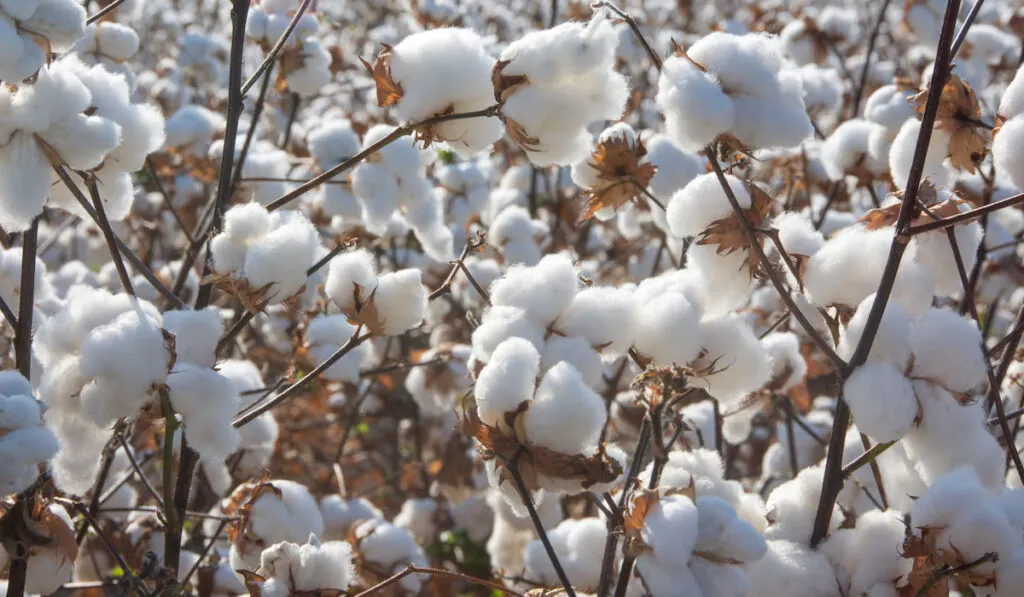
Cotton plants are tropical and subtropical species that thrive in regions with full sun and a good amount of rain.
In the United States, southern states and Texas are considered the primary cotton producers of cotton for both local and international industries.
Cotton is actually an insoluble fiber or cellulose. These soft organic compounds are found inside balls that are produced by these plants. There are four major varieties of cotton. They are organic, Pima, Egyptian, and Upland.
Cotton is primarily used in textile production to create shirts, bed sheets, clothes, and other household fabrics. Each cotton variety will also yield different quality, texture, and durability. In addition, cotton seeds are also useful; you can process them into cottonseed oils.
Flax
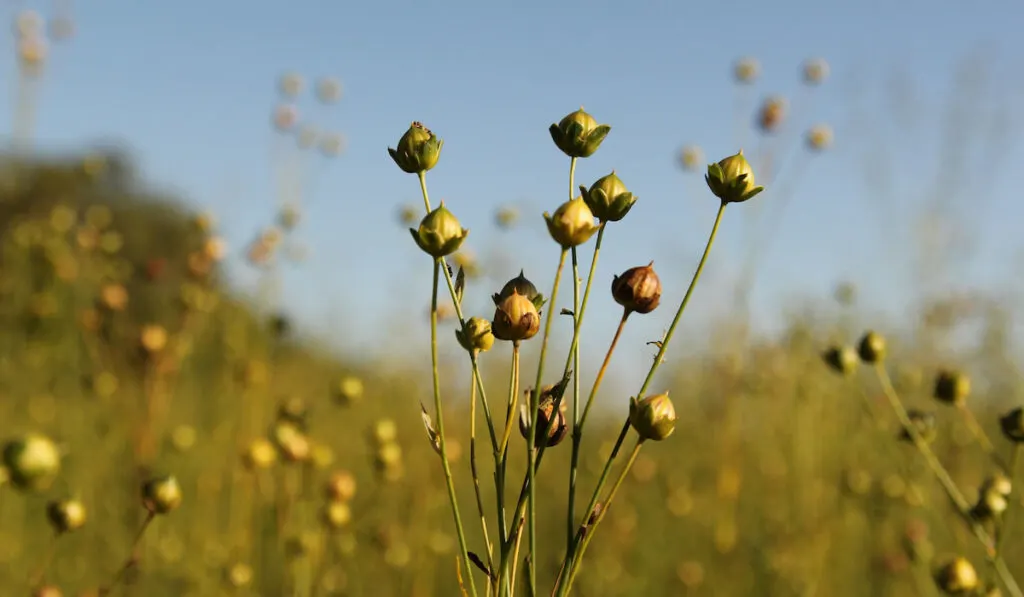
Flax plants are multi-purpose crops that you can grow for their numerous benefits.
They can be processed to make linseed oil, food, and animal feed, as well as fabric known as linen.
These plants are native to the Mediterranean. They are also grown worldwide in many countries such as Canada, Russia, China, and Kazakhstan.
You can recognize flax plants by their slender stems, lance-shaped green leaves, and blue flowers. They thrive in hardiness zones 5 to 9 and love full sun. The optimum rate of sun exposure that these plants should have is 6 to 8 hours per day.
On average, flax plants grow 2 feet tall and grow best in moist and well-drained soil.
Flax fibers or linen is used to make various products such as linen fabrics, bandages, parchment papers, and even cigarette papers.
Jute

Jutes are the second most popular fiber in the world after cotton.
They are widely cultivated in India and Bangladesh. There are two types of natural jutes in existence today. They are white jute and tossa jute. Both jutes are native to South Asia.
Though tossa jute produces higher-quality fiber in comparison to the fiber of white jute, people often choose to cultivate white jute instead because tossa jute is much harder to grow.
Jute plants grow well in warmer climates with frequent rainfall. They grow 5 to 15 feet tall and thrive in a humid environment. Jute fibers come from the plant’s skin and inner stem.
They have brown to off-white colors with thick but stretchable textures. Some of the commercial products made from jute fibers are ropes, mats, gunny sacks, furnishing materials, and other biodegradable fabrics.
6. Industrial Crops
Tobacco
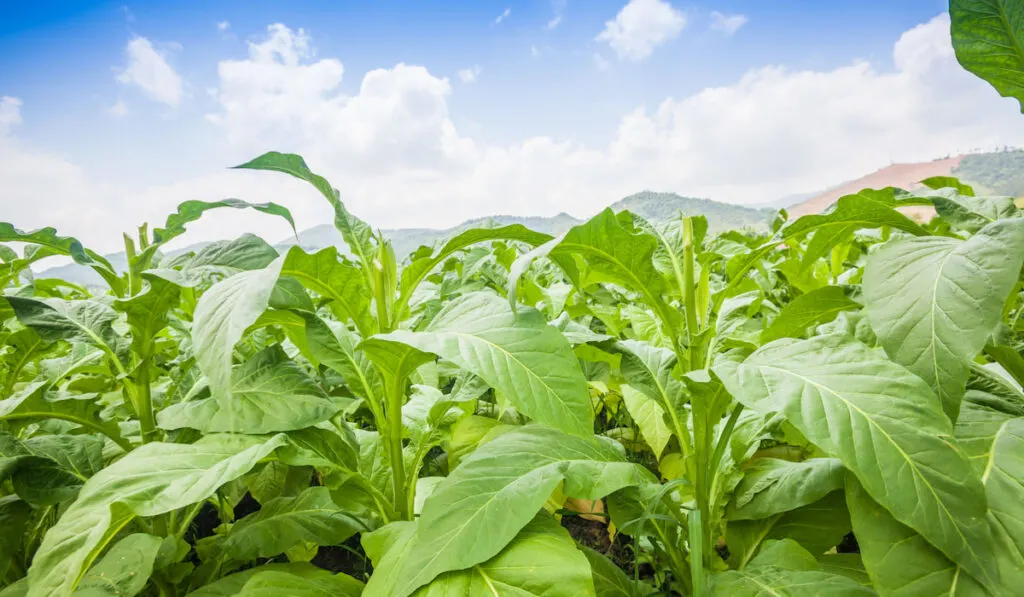
At this point, we all know that the tobacco industry is one of the biggest contributors to the economic and financial sectors of the world. Cigarettes and other tobacco-related products come from these herbaceous plants.
From a quick glance, tobacco plants might look like your ordinary vegetables. But if you take a closer look, they have large, broad green leaves with hairy stems. They also produce clusters of flowers that come in different colors such as white, pink, cream, and red.
Tobacco farmers usually harvest these plants for their stems and leaves. Aside from cigarettes, you can also use the plant to make pesticides.
Sugarcane
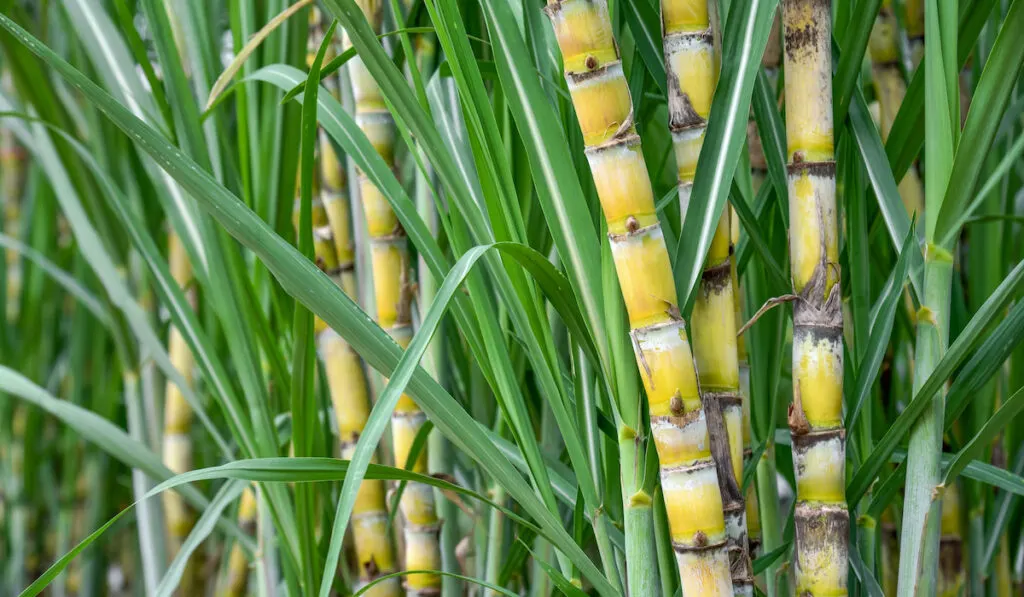
Sugarcanes are native to Papua New Guinea. They are tropical plants that adapt well to warm and hot climates.
In the United States, sugarcane grows best in hardiness zones 9 to 10 and sunny regions such as Texas, Florida, Louisiana, and Hawaii.
On average, these plants grow 10 to 24 feet. They prefer open areas with full sun and moist soil with proper drainage. These plants also don’t do well in cold, arid regions.
If your location is always short on water, it is best for you to build a proper irrigation system so as to properly nourish these plants.
Sugarcanes are primarily used in the production of sugar. These plants produce sucrose in their stalks, which is an organic compound with a sweet taste. You don’t have to replant sugarcanes every year after harvesting.
This is because when you cut the stalks, the leftover part that is still intact in the ground will regrow and mature until the next season.
Rubber Tree
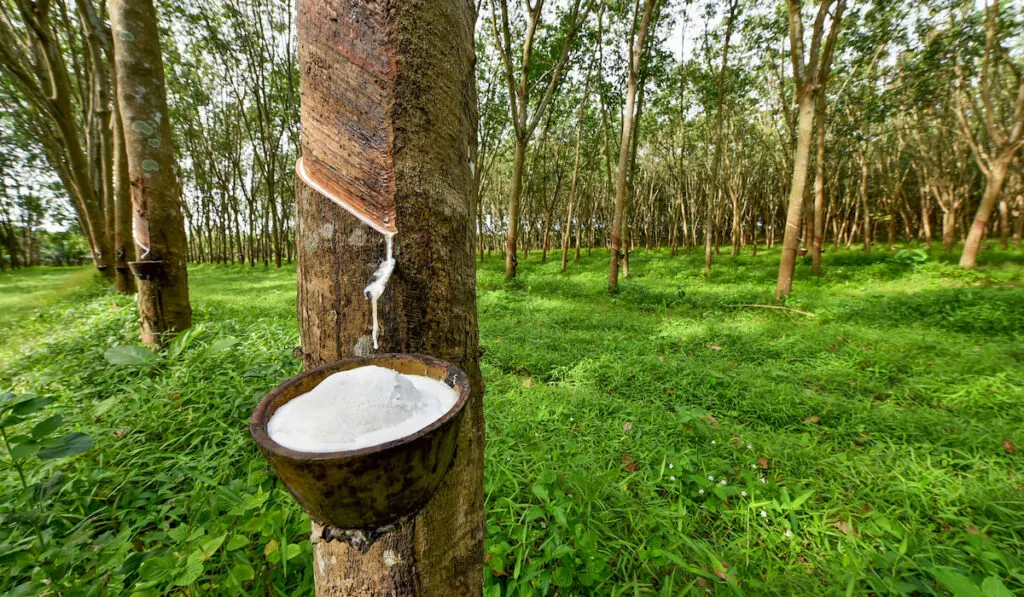
Rubber trees are native to South America, specifically Brazil, Peru, Bolivia, Colombia, Venezuela, and Ecuador.
Rubber plants grow between 100 to 130 feet tall and are ready for latex tapping after their 6th or 7th year of planting.
Farmers and rubber tappers primarily grow rubber trees for latex production. Latex from these plants is incredibly useful in commercial rubber production. Some of the essential products that use rubber latex are tires, rubber gloves, tubes, erasers, and other latex-based products.
As of today, Southeast Asian countries like India, Indonesia, and Thailand are leading producers of rubber. Rubber trees grow well in warm and temperate regions with frequent rainfall and less windy seasons.
7. Ornamental Crops
Ornamental crops are primarily grown for their aesthetic value. They can elevate the appearance of your farm, add colors to your landscape, and simultaneously attract beneficial pollinators such as bees, hummingbirds, and butterflies.
To build an ornamental farm, you should grow both low-growing plants and tall trees alongside each other.
For instance, you can plant tall maple trees at the farm entrance and cultivate beautiful flowering shrubs along the pathways. If you raise farm animals, they also need large shade trees that can shelter them during hot and sunny seasons.
There are two types of ornamental crops that you can grow. They are:
Herbaceous Ornamental Crops
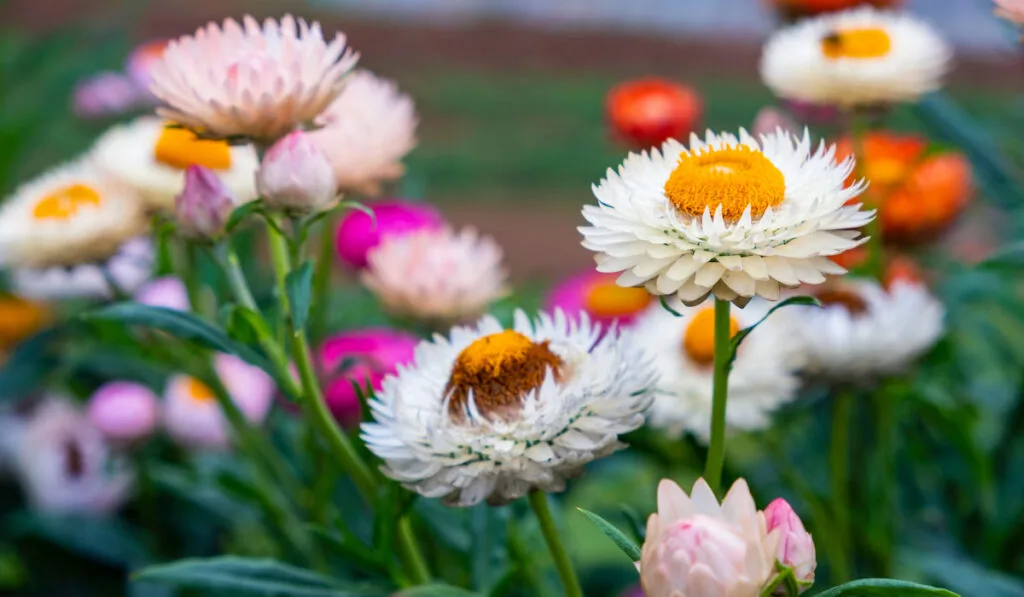
Herbaceous ornamental crops have soft stems that usually wilt and die when the cold season comes. They are low-growing plants that live and grow based on their surrounding environment. Hence, you can find different categories of herbaceous ornamentals such as annual, biennial, and perennial.
Here are a few herbaceous plants with beautiful blooms that you can grow:
- Alyssum
- Petunia
- Blue Sage
- Candytuft
- Strawflower
- Snapdragons
- Pansy
- Viola
- Hollyhock
Woody Ornamental Crops
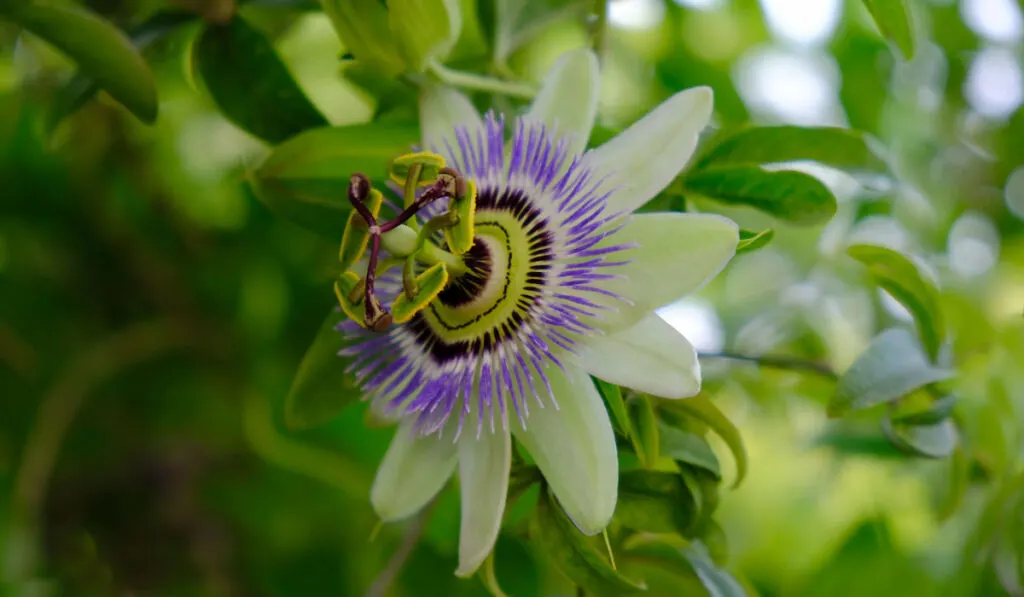
Like their name, woody ornamental crops have stronger stems and branches that withstand changing seasons throughout the entire year. As they mature, they also grow bigger and taller than most herbaceous plants.
There are a few categories of woody ornamentals such as vines, shrubs, and common trees.
Here are a few varieties of woody plants that you can grow as ornamental crops:
- Scotch Heather
- Greenbriar
- Honey Locust
- Rose
- Passionflower
- American Wisteria
- Sugar Maple
- Virginia Creeper
- Red Oak
- Bald Cypress
- Service Berry
Final Thoughts
Overall, it is always best for you to pick one or two different crops as starters. For instance, you can grow both food and forage crops in the same location while raising a few farm animals alongside. Little by little, you can add other crops and upgrade your farming system better with enough experience on hand.
Resources
- https://eos.com/blog/types-of-crops/
- https://www.britannica.com/topic/crop-agriculture
- https://cropforlife.com/classification-types-of-crops-basics-of-agriculture/
- https://www.gobble.com/blog/different-types-of-grains/
- https://www.mayoclinic.org/healthy-lifestyle/nutrition-and-healthy-eating/in-depth/whole-grains/art-20047826
- https://www.healthline.com/nutrition/6-healthiest-seeds
- https://restaurantclicks.com/types-of-edible-seeds/
- https://www.hsph.harvard.edu/nutritionsource/food-features/oats/
- https://www.growveg.com/plants/us-and-canada/how-to-grow-oats/
- https://www.delightedcooking.com/what-is-wheat.htm
- https://www.veterinariadigital.com/en/articulos/importance-of-wheat-in-animal-feed-and-production
- https://www.myfermentation.com/beer/how-to-grow-your-own-barley-zerz1904zwoo
- https://www.croptrust.org/pgrfa-hub/crops-countries-and-genebanks/crops/barley/
- https://www.thespruce.com/peanut-plant-profile-4797389
- https://www.agmrc.org/commodities-products/nuts/peanut-profile
- https://peanutallergyfacts.org/2021/11/01/why-there-is-no-such-thing-as-a-peanut-oil-allergy/
- https://plantvillage.psu.edu/topics/soybean/infos
- https://ncsoy.org/media-resources/uses-of-soybeans/
- https://thekidshouldseethis.com/post/how-to-harvest-sunflower-seeds
- https://en.wikipedia.org/wiki/Sunflower_seed
- https://www.webmd.com/diet/sunflower-oil-good-for-you
- https://plantvillage.psu.edu/topics/carrot/infos
- https://www.specialtyproduce.com/produce/Carrots_1133.php
- https://www.almanac.com/plant/sweet-potatoes
- https://www.thespruce.com/how-to-grow-sweet-potatoes-in-the-home-garden-1403479
- https://www.thespruceeats.com/beet-facts-selection-and-storage-1807488
- https://www.almanac.com/plant/beets
- https://www.masterclass.com/articles/what-is-cotton
- https://cropforlife.com/cotton/
- https://www.epicgardening.com/flax-plant/
- https://www.agmrc.org/commodities-products/grains-oilseeds/flax-profile
- https://en.wikipedia.org/wiki/Jute
- https://sewport.com/fabrics-directory/jute-fabric
- https://www.textilesphere.com/2019/10/cultivation-of-jute-fiber.html
- https://plantvillage.psu.edu/topics/tobacco/infos
- https://www.rainforest-alliance.org/species/rubber-tree/
- https://www.agrifarming.in/rubber-plantation
- https://www.masterclass.com/articles/how-to-grow-sugar-cane
- https://www.thespruce.com/growing-sugar-cane-plants-5086465
- https://morningchores.com/ferme-ornee/
- https://www.thespruce.com/what-are-herbaceous-plants-2131063
- https://content.ces.ncsu.edu/extension-gardener-handbook/10-herbaceous-ornamentals
- https://content.ces.ncsu.edu/extension-gardener-handbook/11-woody-ornamentals
